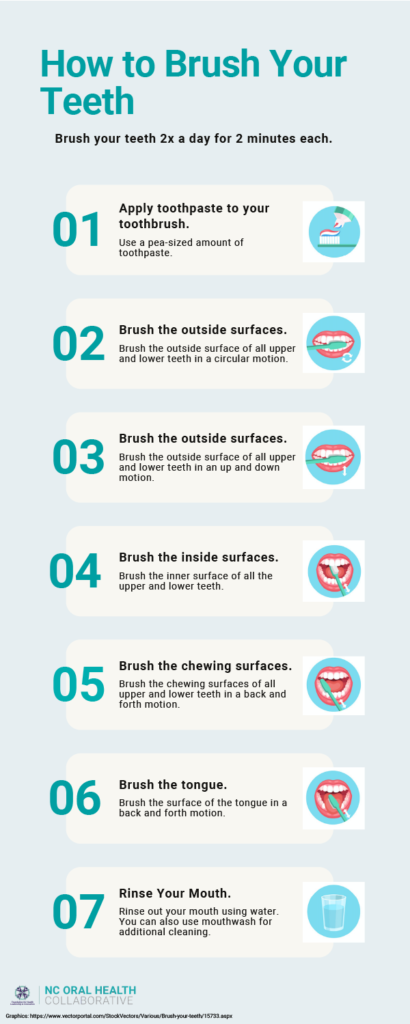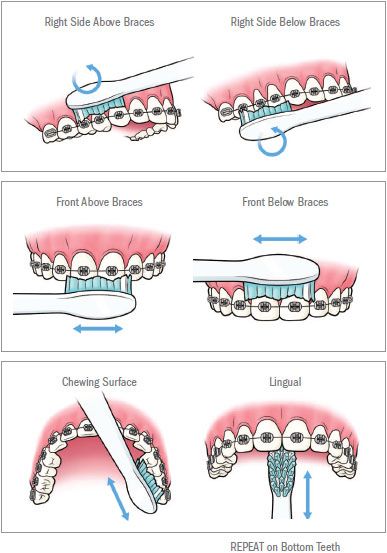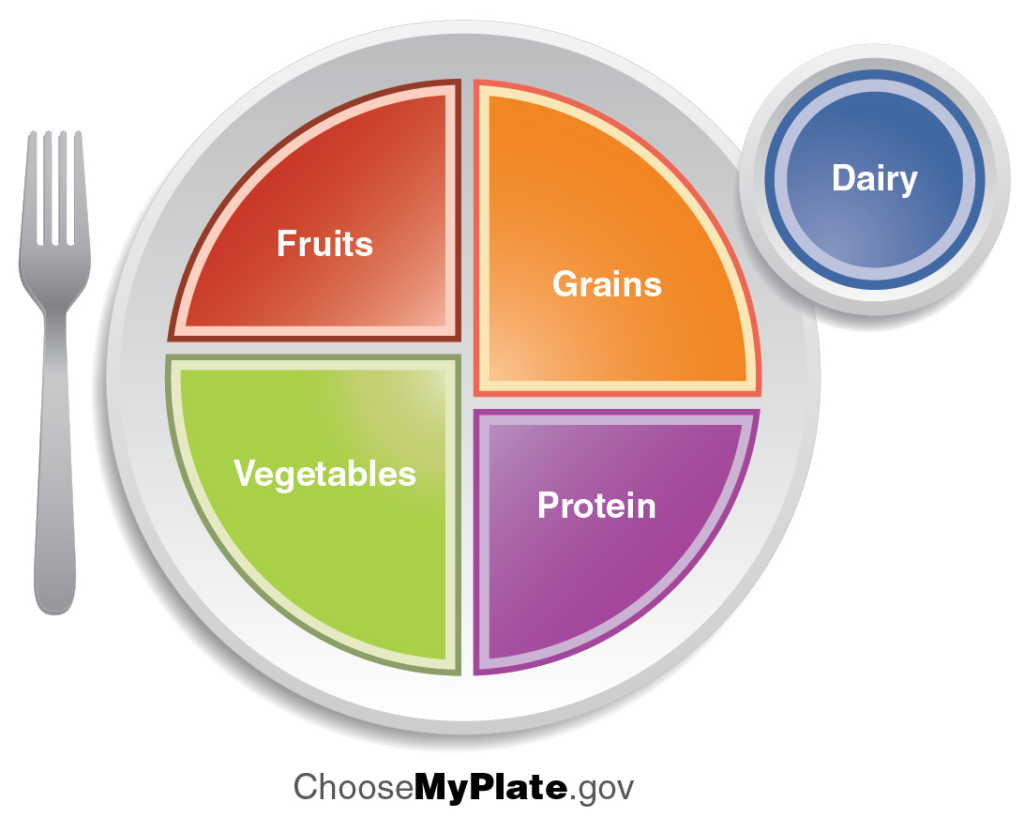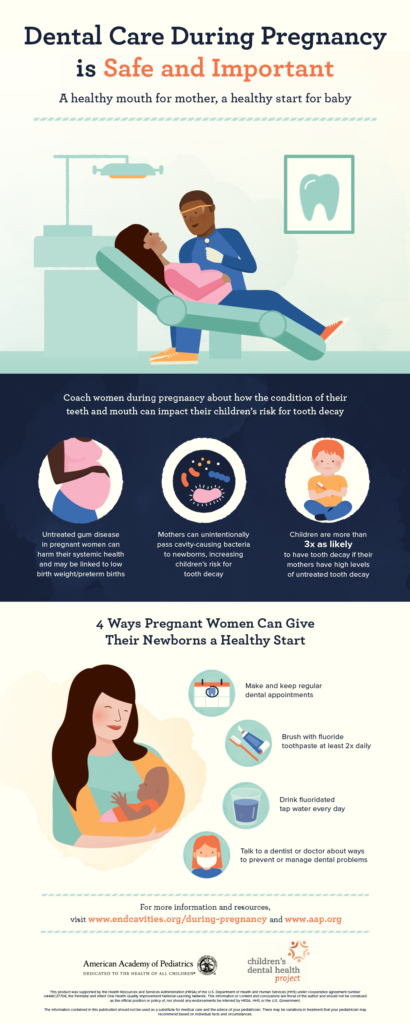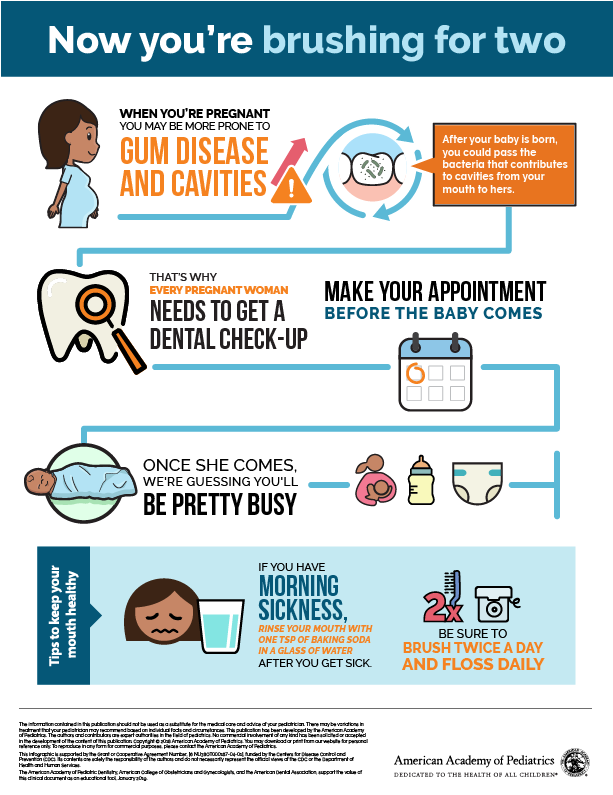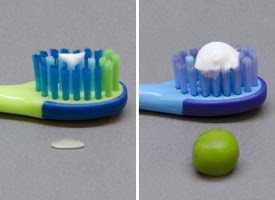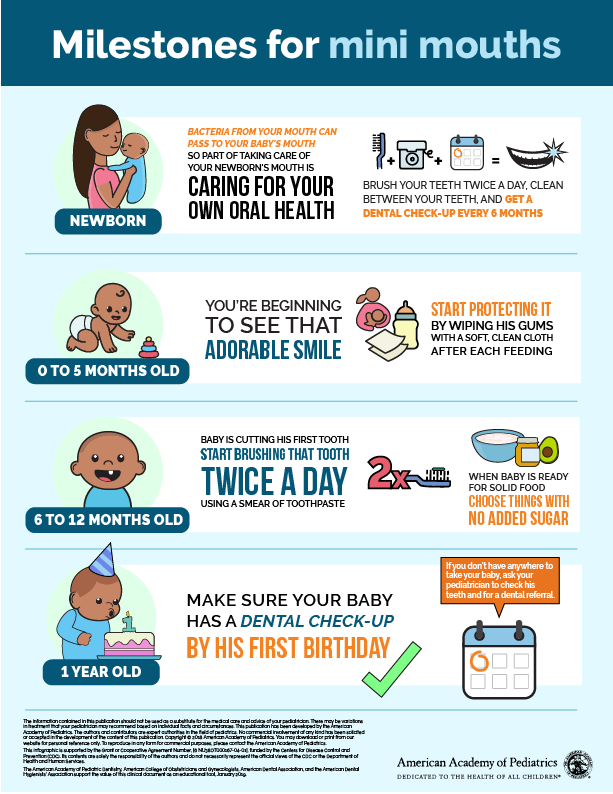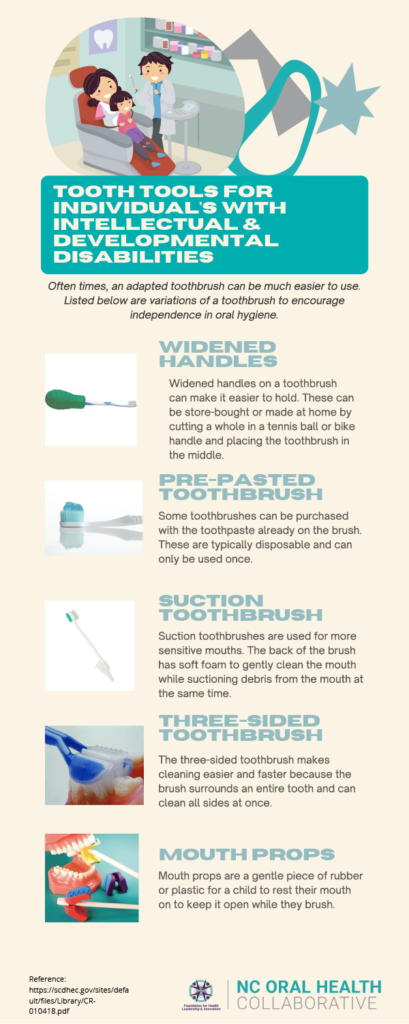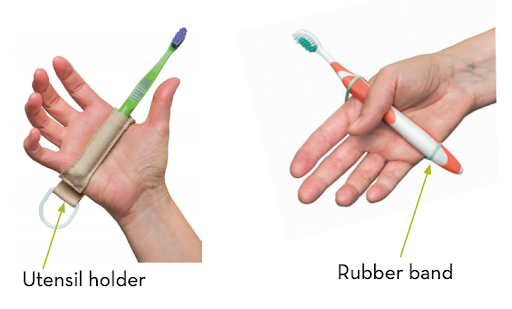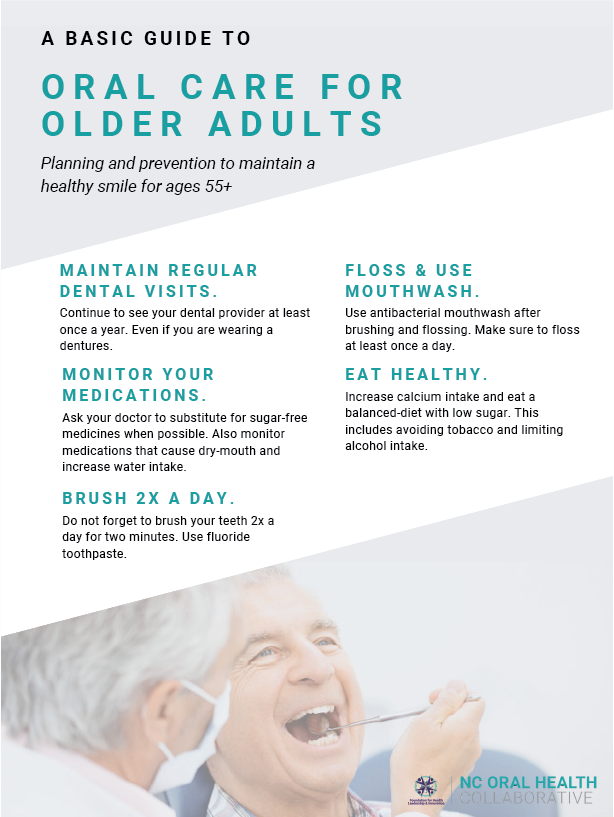Healthy Mouths
The path towards a brighter and healthier smile starts with foundational knowledge about oral health.
This website is an educational resource to provide a better understanding of oral health for all ages and populations. The page includes information for patients and providers alike to learn more about oral hygiene, routine maintenance, treatment plans, and more.
Search the table of contents below to find the information you are looking for and if you can, please fill out the pop-up survey to further improve the content of this webpage.

What is Oral Health?
- Oral health, which includes health of the gums, teeth, jawbone, tongue, and palate, is a “mirror for general health and well-being.” Poor oral health can have significant impacts on an individual’s overall health.
- The World Health Organization Global Oral Health Programme emphasizes this interrelation and notes that oral health is a determining factor for quality of life.
Why is it Important?
- Oral health influences general health and well-being
- Oral disease can cause pain and issues with eating, speaking, learning, expressing emotions, employment potential, and social interaction.
- If your mouth is healthy, it is easier to smell, taste, chew, swallow, speak, and smile.
Maintaining Good Oral Health…
- Reduces the risk of disease.
- Keeps our teeth and gums healthy for life.
- Maintains our appearance.
- For pregnant mothers, gives babies healthier mouths.
The Best Ways to Maintain a Healthy Smile
- Brush your teeth twice a day with a soft toothbrush and fluoride toothpaste.
- Clean between your teeth daily by flossing.
- Use fluoride mouthwash to rinse your mouth out after brushing.
- Visit the dentist for routine checkups and recommended cleanings.
- Eat a healthy diet that limits sugary beverages and snacks.
- When shopping for dental products, look for the ADA Seal of Acceptance on the package.
Flossing
- Flossing removes plaque between teeth where a toothbrush can’t reach. If not removed, plaque can build up and cause tooth decay.
- What type of floss is best? Waxed, unwaxed, flavored, or plain all do the same thing (use the one you like best).
- What if it is hard to floss? If it is hard to floss, there are flossing tools that can help, such as floss picks and water picks.
Brushing with Braces
Image credits: Thomas Orthodontics
Dental Sealants
- What are dental sealants?
- Dental sealants are thin coatings that when painted on the chewing surfaces of the back teeth (molars) can prevent cavities.
- Sealants protect the teeth from cavities by covering them with a protective shield that blocks out germs and food.
- Once applied, sealants protect against 80% of cavities for 2 years and continue to protect against 50% of cavities for up to 4 years.
- Dental sealants are usually used for children. For more information on sealants, refer to the Children’s Oral Health section.
Influence of Diet on Oral Health
- To have good oral health, you must eat a well-balanced diet.
- Foods that contain sugars of any kind can contribute to tooth decay.
- To control the amount of sugar you eat, try to focus on eating foods with natural sugars like fruits and vegetables.
Snacking and Oral Health
- Limit the number of snacks you eat. If you do snack, choose something that is healthy like fruit or vegetables or a piece of cheese.
- Foods that are eaten as part of a meal cause less harm to teeth than eating lots of snacks throughout the day, because more saliva is released during a meal. Saliva helps wash foods from the mouth and lessens the effects of acids, which can harm teeth and cause cavities.
Drinking Water
- Choose tap water and drink enough water each day.
- Most tap water has fluoride in it, which assists in maintaining a healthy smile.
- If you choose bottled water, pick brands that contain fluoride
The Best Foods for your Teeth
- Foods high in calcium (dairy products like milk, cheese, yogurt).
- Foods high in protein (meat, nuts, beans).
- Fruits and vegetables.
- Water with fluoride.
- Maintaining a well-balanced diet rich in vitamins and minerals.

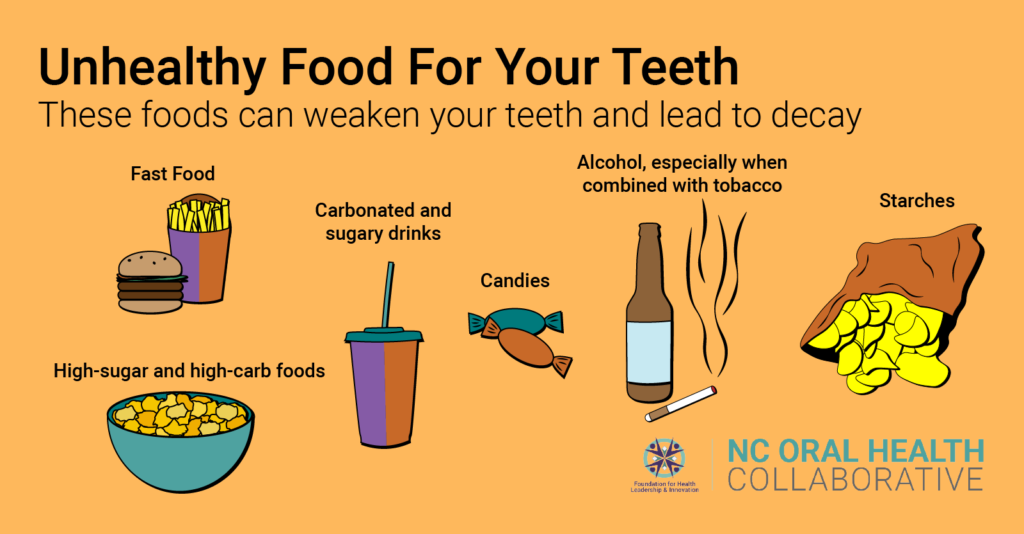
Unhealthy Foods for your Teeth
- Hard candies.
- Chewing on ice.
- Too much caffeine.
- Some caffeine is healthy to have but too much caffeinated coffee and tea can dry your mouth.
- Frequent drinks of coffee and tea can also stain your teeth.
- Adding additional sugar and creamers to coffee and tea can make it much less healthy.
- Sticky foods.
- Soda, sports drinks, energy drinks, and other sugary beverages.
- High amounts of alcohol consumption.
- Tobacco use.
Eating Tips for Good Dental Health
- Drink plenty of water.
- Eat a variety of foods from each of the five major food groups (follow the MyPlate guidelines):
- Whole grains
- Fruits
- Vegetables
- Protein
- Dairy
- Limit the number of snacks you eat, and if you do snack, make sure you eat healthy snacks.
- Avoid breaking a tooth by chewing down on extra hard foods.
- Limit caffeine intake.
- Avoid high sugar foods.
- Limit alcohol consumption and do not use tobacco.
How to Improve pregnant individuals’ oral health.
- People who have a lot of cavity-causing bacteria during pregnancy and after delivery could transmit these bacteria from their mouth to the mouth of their baby
- An individual’s health during pregnancy can influence the health of their child
- People can unintentionally pass cavity-causing bacteria to newborns, increasing the children’s risk for tooth decay
Promoting Healthy Mouths in Newborns
- Make and keep regular dental appointments
- Brush with fluoride toothpaste at least 2x daily
- Drink fluoridated tap water every day
- Talk to a dentist about ways to prevent or manage dental problems
- If you have morning sickness, make sure to rinse mouth with one tsp of baking soda in a glass of water
Common Oral Health Questions from Pregnant Individuals
Is it safe to have a dental visit while pregnant?
- Yes! In fact, it’s recommended.
At what point in my pregnancy should I have a dental check-up?
- Get a dental check-up before your delivery. If your last visit was more than six months ago, or you have any oral health issues, schedule an appointment as soon as possible.
What information should I tell my dentist about my pregnancy?
- Tell your dentist that you are pregnant and your due date. Also be sure they are aware of any medications you’re taking, specific medical conditions, any form of tobacco or drug use, or if your pregnancy is high-risk.
Are dental treatments safe during pregnancy?
- Yes. X-rays, local anesthetics and most pain medication are safe as long as the dentist is aware of your pregnancy.
Common Oral Health Questions from Postpartum Individuals
What can I do to take care of my baby’s mouth before their teeth break through?
- Whether you breast or bottle feed, wipe your baby’s gums after each feeding and before bedtime.
- Keep taking care of your own oral health and avoid cleaning pacifiers with your mouth.
What should I do when my baby begins teething?
- Try to soothe your teething baby by rubbing the gums with a clean finger or allowing her to chew on a clean, moist washcloth. You can also ask your doctor to recommend a safe teething ring.
What do I do if my baby falls asleep with a bottle while feeding?
- Infants may fall asleep with a bottle in their mouth while they are being fed. If this happens, try to wipe their gums with a soft, clean cloth. This helps wipe away sugar and bacteria that together can cause cavities.
- Avoid putting the child down with a bottle.
When should I begin brushing their teeth?
- Begin brushing as soon as the first tooth appears.
- Be sure to brush twice a day using a small smear of toothpaste (the size of a grain of rice).
When should I schedule my baby’s first dental visit?
- Your baby should see a dentist after their first tooth appears, but no later than their first birthday.
Are baby teeth important?
- Yes, it is important to keep baby teeth cavity free even though they will eventually fall out.
- Baby teeth help children to eat healthy food, develop their speech, and maintain space for their adult teeth.
- Bacteria that cause cavities in baby teeth stay in the mouth and may cause cavities in permanent teeth.
Baby Teeth Basics
- Your baby is born with 20 teeth below the gums, and they usually start coming through between 6 months and a year.
- Most children have their full set of teeth by 3 years old
- A baby’s front four teeth usually push through the gums at about six months of age, although some children don’t have their first tooth until 12 or 14 months.
Stages of a Child’s Tooth Care
- As soon as the first tooth comes into place, start brushing your child’s teeth with a toothbrush designed for children
- Your child’s first dental visit should take place after their first tooth appears, but no later than the first birthday
- For children younger than 3 years, place on the toothbrush fluoride-containing toothpaste about the size of a grain of rice
- For children 3 to 6 years of age, you should place no more than a pea-sized amount of fluoride containing toothpaste on the toothbrush
- Permanent teeth should start coming in when your child is 6 or 7 years old
- Permanent teeth will continue to erupt throughout the teenage years and possibly even into the early adult years
Healthy Habits to Prevent Kids’ Tooth Decay
- Establish healthy habits in your kids from a young age
- Children should brush their teeth for 2 minutes 2 times a day (use fluoride toothpaste)
- For children under 3, use grain of rice size toothpaste
- For children 3 years and over, use pea size of toothpaste
- Schedule first dental visit no later than their first birthday
- Don’t share utensils with your child as you can transfer cavity-casuing germs to your child
- Apply dental sealants
- Restrict pacifier usage to when a child is sleeping
- If pacifiers are used too often, they can harm the growth and development of the mouth and teeth
Pacifiers and Thumbsucking
How can thumbsucking affect my child’s teeth?
- After permanent teeth come in, sucking may cause problems with the proper growth of the mouth and alignment of the teeth.
- It can also cause changes in the roof of the mouth.
- Pacifiers can affect the teeth essentially the same ways as sucking fingers and thumbs, but it is often an easier habit to break.
When do children stop sucking their thumbs?
- Children usually stop thumbsucking before their permanent teeth erupt so this typically is not a problem
- If your child’s baby teeth are changing, consult a dentist
How can I help my child stop thumbsucking?
- Children often suck their thumbs when feeling insecure or needing comfort. Focus on correcting the cause of the anxiety and provide comfort to your child.
- For an older child, involve him or her in choosing the method of stopping.
Bottle Feeding and Tooth Decay
- Using the bottle incorrectly can cause tooth decay. To avoid this, make sure to:
- Never put your baby to bed with a bottle filled with milk. If your baby needs to suck on something to go to sleep, try a pacifier or a bottle filled with water.
- Avoid using the bottle as a pacifier.
- Use only formula, breast milk or water in the bottle.
- If possible, wean your baby from the bottle by 1 year of age.
Dental Sealants
Dental sealants are thin coatings painted on the back of the teeth to prevent cavities.
Should I ask the dentist to put sealants on my child’s teeth?
- Yes. Cavities are one of the most common conditions among children. Left untreated, cavities can cause pain and problems in eating, speaking, and learning. Sealants are a protective shield from cavities
When can my child get sealants?
- Around age 6 for 1st molars and age 12 for 2nd molars
Will sealants hurt?
- Getting a sealant is easy and does not hurt. The tooth is cleaned and a gel may be placed on the tooth for a few seconds. The tooth is then rinsed and dried. Next, the sealant is painted on the tooth. The dentist or dental hygienist also may shine a light on the tooth to help harden the sealant to form a protective shield.
Will sealants make the teeth look or feel different?
- Sealants are very thin and fill the pits and grooves of the teeth. Sometimes children can feel the sealant with their tongues for a short while after the sealant is placed. Sealants can be clear, white, or slightly tinted. Usually, you cannot see a sealant when a child talks or smiles.
How long will sealants last?
- Sealants have shown to still work 9 years after placement. However, sometimes they do fall off, so they should be checked at regular dental appointments. If a tooth loses a sealant, the protective shield is gone and the tooth can get a cavity. Missing sealants are easy to replace.
Are sealants covered by Dental Plans?
- Some plans do cover sealants, so call your dental benefit company to find out what kind of coverage you have.
A Child’s First Dental Visit
To make your child’s first visit positive:
- Consider making a morning appointment, when children tend to be rested and cooperative.
- Keep any anxiety or concerns you have to yourself. Children can pick up on your emotions, so emphasize the positive.
- Never use a dental visit as a punishment or threat.
- Never bribe your child.
- Talk with your child about visiting the dentist.
During this visit, you can expect the dentist to:
- Inspect for oral injuries, cavities or other problems.
- Let you know if your child is at risk of developing tooth decay.
- Clean your child’s teeth and provide tips for daily care.
- Discuss teething, pacifier use, or finger/thumbsucking habits.
- Discuss treatment, if needed, and schedule the next check-up.
Additional Resources for Children’s Oral Health
Most people with mild intellectual disability can be treated in a general practice setting. But, it is important to make sure the dentist you find has the training, experience, or the desire needed to manage people with special needs. It is important to find a dentist who is comfortable working with children with special needs in his/her practice.
How to Prepare for a Dental Appointment
- Try to make the appointment when your child is not too tired, like early in the morning or after a nap.
- If visiting a dentist for the first time, talk to the dentist ahead of time about what to expect
- When talking with your child, say positive things about going to the dentist. Do not to use words like “hurt,” “pain,” “scared,” “shot,” “needle” or “drill.”
- Before the appointment, determine who can legally provide informed consent for treatment
- Click here for a checklist of things to share with your dentist if you have a child with an intellectual or developmental disability.
What to Expect During the Dental Appointment
- To set the stage for a successful visit, the entire dental team will usually be involved with the patient and aware of the patient’s condition.
- Once the caregiver and patient arrive in the operatory, the cleaning will begin followed by a short check-in with the dentist.
- As a caregiver, ask the dentist for a demonstration of proper brushing and flossing techniques, if necessary.
- Ask the dentist about preventive measures such as dental sealants (link to dental section on sealants).
- If a lot of work needs to be done on your child’s mouth, the dentist will likely recommend Nitrous Oxide or General Anesthesia (see below) depending on your child’s ability to be cooperative in the dental chair.
- Appointments should be kept short and more difficult procedures should be postponed until your child is familiar with the dental team and staff.
After the Dental Appointment
- Encourage your child to have independence in daily oral hygiene but assist where necessary. It is crucial to brush teeth for 2 minutes, 2x a day with fluoride toothpaste.
- Try to reduce intake of sugary foods and beverages, especially as snacks. Also avoid using sweets as incentives or rewards.
- If your child takes medicines that cause dry-mouth, encourage your child to drink water often.
- If medicine doses have the option, try to use sugar-free medicine and rinse with water after each dose.
- Follow-up with the dentist about preventive measures such as sealants (link to dental section on sealants).
- Ask the dentist for a prescription fluoride toothpaste. This is typically covered by all insurance and is an additional step in cavity prevention for your child.
Use of Nitrous Oxide/Oxygen Sedation
- Consider nitrous oxide/oxygen sedation to reduce anxiety and fear and improve cooperation. Informed consent from the legal guardian must be obtained before administering any kind of sedation.
- Inhalation sedation involves using nitrous oxide and oxygen to decrease anxiety in fearful or anxious patients. The individual is awake during the procedure, and must be cooperative enough to inhale gases and keep the nasal hood in place.
- Nitrous oxide helps children relax while sitting in the dentist’s chair so they can get the care they need to maintain a healthy smile without fear, anxiety, or upset. It is referred to as “laughing gas” because one of the side effects associated with it is a feeling of well-being or euphoria.
- The effects of nitrous oxide take effect quickly and also immediately wears off after the breathing mask is removed. In fact, school-aged children are often able to return to the classroom after their appointment is over!
- Because there are no lingering side effects from nitrous oxide, it is safe for patients of all ages, including young children.

Use of General Anesthesia
- General anesthesia is appropriate for patients who are uncooperative and have extensive dental needs. In these cases, it is often necessary to go to the hospital for the procedure.
- In this case, the child will be completely asleep for the procedure and the dentist is usually able to do much more dental work, if necessary.
- Anesthesia is a way to make a person sleep using medications and is completely safe for children. During the state of sleep, the patient is completely monitored with gadgets that check pulse, breathing, and the brain.
Tooth Cleaning Products for Patients with IDD
- Toothbrushes with widened handles
- Tennis Ball: Cut a hole on both ends of a tennis ball and then push the toothbrush through the ball
- Bicycle Handle: push the toothbrush into the hole where the bicycle handle would fit. Not all bicycle handles will work.
- Use an elastic band or a piece of Velcro to hold the brush in the child’s hand. Be careful not to pull too tight.
- Water flossers
- Pre-pasted toothbrushes
- Mouth props
- Suction toothbrushes
Tips for Providers in Treating a Patient with IDD
- Ask patients to show you how they brush, and follow up with specific recommendations on brushing methods or toothbrush adaptations. Involve your patients in hands-on demonstrations of brushing and flossing.
- Reduce distractions in the operatory, such as unnecessary sights, sounds, or other stimuli, to compensate for the short attention spans.
- Talk with the parent or caregiver to determine your patient’s intellectual and functional abilities, then explain each procedure at a level the patient can understand.
- Address your patient directly and with respect to establish a rapport. Even if the caregiver is in the room, direct all questions and comments to your patient.
- Use simple, concrete instructions and repeat them often to compensate for any short-term memory problems. Speak slowly and give only one direction at a time.
- Be consistent in all aspects of oral care, since long-term memory is usually unaffected. Use the same staff and dental operatory each time to help sustain familiarity. The more consistency you provide for your patients, the more likely they will cooperate.
- Listen actively, since communicating clearly is often difficult for people with intellectual disability. Show your patient whether you understand. Be sensitive to the methods he or she uses to communicate, including gestures and verbal or nonverbal requests
- Keep appointments short and postpone difficult procedures until after your patient is familiar with you and your staff.
- Reward cooperative behavior with compliments throughout the appointment.
How to Maintain Healthy Teeth for Your Lifetime
- Drink fluoridated water and brush with fluoride toothpaste
- Brush teeth twice a day and floss each day between teeth
- Visit your dentist at least once a year
- Do not use tobacco products
- Limit alcohol consumption
Diabetes and Oral Health
- If you have diabetes, work to maintain control of diabetes
- Diabetes can increase risk of gum disease
- Treating gum disease can lower risk of diabetes
- Living with Diabetes
- If your medication causes dry mouth, ask your doctor for a different medication
- Other ways to avoid dry mouth include drinking water, chewing sugarless gum, avoiding tobacco and alcohol products
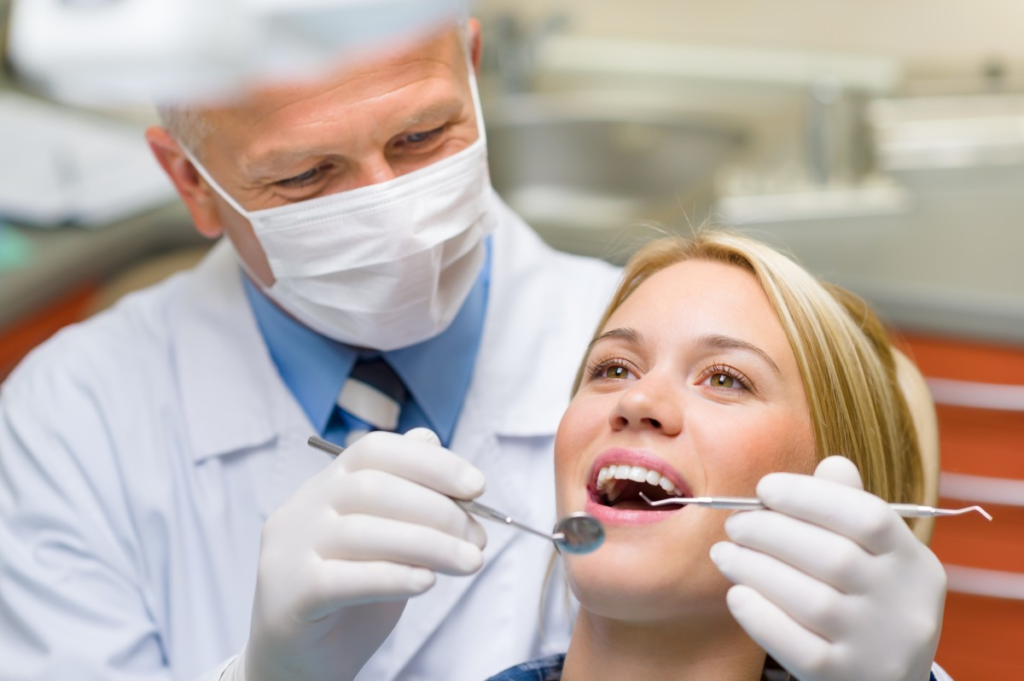
How to Maintain Good Oral Health at an Older Age
- Gently brush at least two times a day with fluoride toothpaste
- Floss regularly
- Avoid sticky, sugary foods, or brush immediately after eating them
- Rinse with water after using an inhaler or taking any syrup-based medicines
- Select sugarless cough drops, vitamins, and antacid tablets
- Use a fluoride mouth rinse that does not contain alcohol
- Visit the dentist regularly

Dry Mouth and Aging
- Dry mouth is one of the greatest risks for older adults
- Dry mouth is the feeling that there is not enough saliva in the mouth.
- Common causes of dry mouth in older adults include side effects of certain medications and dehydration, when you lose more fluid than you take in
- It is important to know that dry mouth is not part of the aging process itself. However, many older adults take medications that can dry out the mouth, and taking more than one of these can make dry mouth even worse
- How can you care for a dry mouth?
- Sip water or sugarless drinks often, especially during meals
- Avoid drinks with caffeine
- Chew sugarless gum or suck on sugarless hard candy to make the saliva flow
- Don’t use tobacco or alcohol
- Limit intake of spicy or salty foods, as they can dry out the mouth
- Use a humidifier at night
Dentures
- If the person you care for (or you) have dentures, remember to:
- Remove at night and brush before putting them into a cup of water (ask the dentist if denture cleaning tablets should be used).
- Rinse and brush dentures again before placing them in the mouth.
- Keep them in water at all times when not in the mouth.
- Change the water in the cup daily.
Brushing at an Older Age
- If the person you care for cannot brush their own teeth, utilize the following steps to assist in their brushing process:
- Wash your hands and wear disposable gloves.
- Gently remove dentures or partials.
- Check between the teeth and cheeks for bits of food, swiping the area with a gloved finger or damp gauze.
- Use a toothbrush with soft bristles.
- Use a small amount of fluoride toothpaste. If toothpaste bothers your care recipient, brush with water instead.
- Place the toothbrush bristles at an angle toward the gum line so they clean between the gums and teeth.
- Be sure to brush the teeth on all sides using small circular motions, then brush the tongue.
- If the person you care for cannot rinse, give a drink of water or sweep the mouth with a finger wrapped in damp gauze.
- If the person you care for CAN brush their own teeth, try to adapt the toothbrush for an easier grip i.e.
- Make the toothbrush handle bigger
- Make the toothbrush easier to hold
- If the person you care for CANNOT brush their own teeth, you might also want to consider the “two-toothbrush technique” which keeps the mouth open and prevents accidental biting
- Use a large handle of one brush to pull back cheek; allow care recipient to rest teeth on handle.
- Use a second toothbrush to brush teeth.
Dental Clinics Near Me
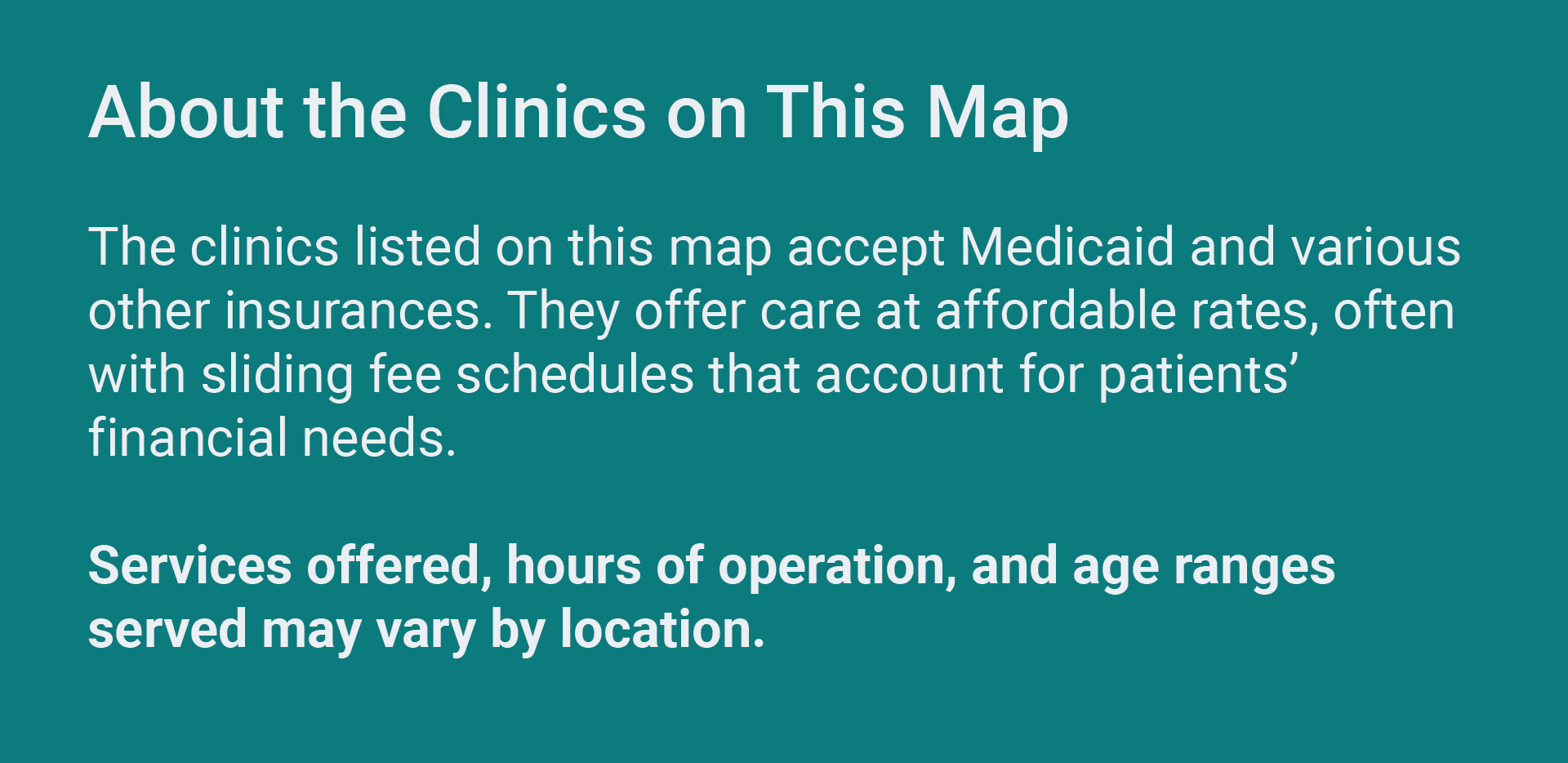
For more information on dental providers in your region, contact your Regional Dental Hygienst, which can provide information on dentists that accept individuals with intellectual and developmental disabilities, pregnant women, young children, and other patients with specific needs.

| Region | Dental Hygienist | Phone Number | |
|---|---|---|---|
| Region 1 | Kristal Cherry | Kristal.Cherry@dhhs.nc.gov | (828)-371-5138 |
| Region 1 | Lori Nicholson | Lori.Nicholson@dhhs.nc.gov | (828)-837-9193 |
| Region 2 | Kiley Dellinger | Kiley.Dellinger@dhhs.nc.gov | (919)-418-2654 |
| Region 3 | Phyllis Davis | Phyllis.Davis@dhhs.nc.gov | (828)-652-9376 |
| Region 3 | Kim Middleton | kim.middleton@dhhs.nc.gov | (336) 301-0346 |
| Region 3 | Laura McNeill | Laura.McNeill@dhhs.nc.gov | (336)-944-4732 |
| Region 4 | Vacant | ||
| Region 4 | Vacant | ||
| Region 5 | Vacant | ||
| Region 5 | Vacant | ||
| Region 6 | Alaina Worley | Alaina.Worley@dhhs.nc.gov | |
| Region 6 | Johnnie Butterfield | Johnnie.Butterfield@dhhs.nc.gov | (919)-353-4173 |
| Region 7 | Heather L. Cook | (252) 676-7237 | |
| Region 7 | Susan Rollason | (919) 482-5190 | |
| Region 8 | Tillie Clark | Tillie.Clark@dhhs.nc.gov | (910) 374-9918 |
| Region 8 | Bonnie Johnson | Bonnie.Johnson@dhhs.nc.gov | (910) 890-3308 |
| Region 8 | Linda Swarts | (910) 330-6363 | |
| Region 9 | Dianna K. Hall | Dianna.Hall@dhhs.nc.gov | (252) 395-2442 |
| Region 9 | Rae Elliott | Rae.Elliott@dhhs.nc.gov | (252) 230-0103 |
| Region 10 | Debi Grzeslo | Debi.Grzeslo@dhhs.nc.gov | (252) 671-7611 |
| Region 10 | Sonia Gathura-Karema | Sonia.Gathura-Karema@dhhs.nc.gov |
We Want to Hear From You!
Take a minute and fill out this brief survey to let us know if this webpage was helpful to you and if there is anything else you would like to see to better understand oral health care.


